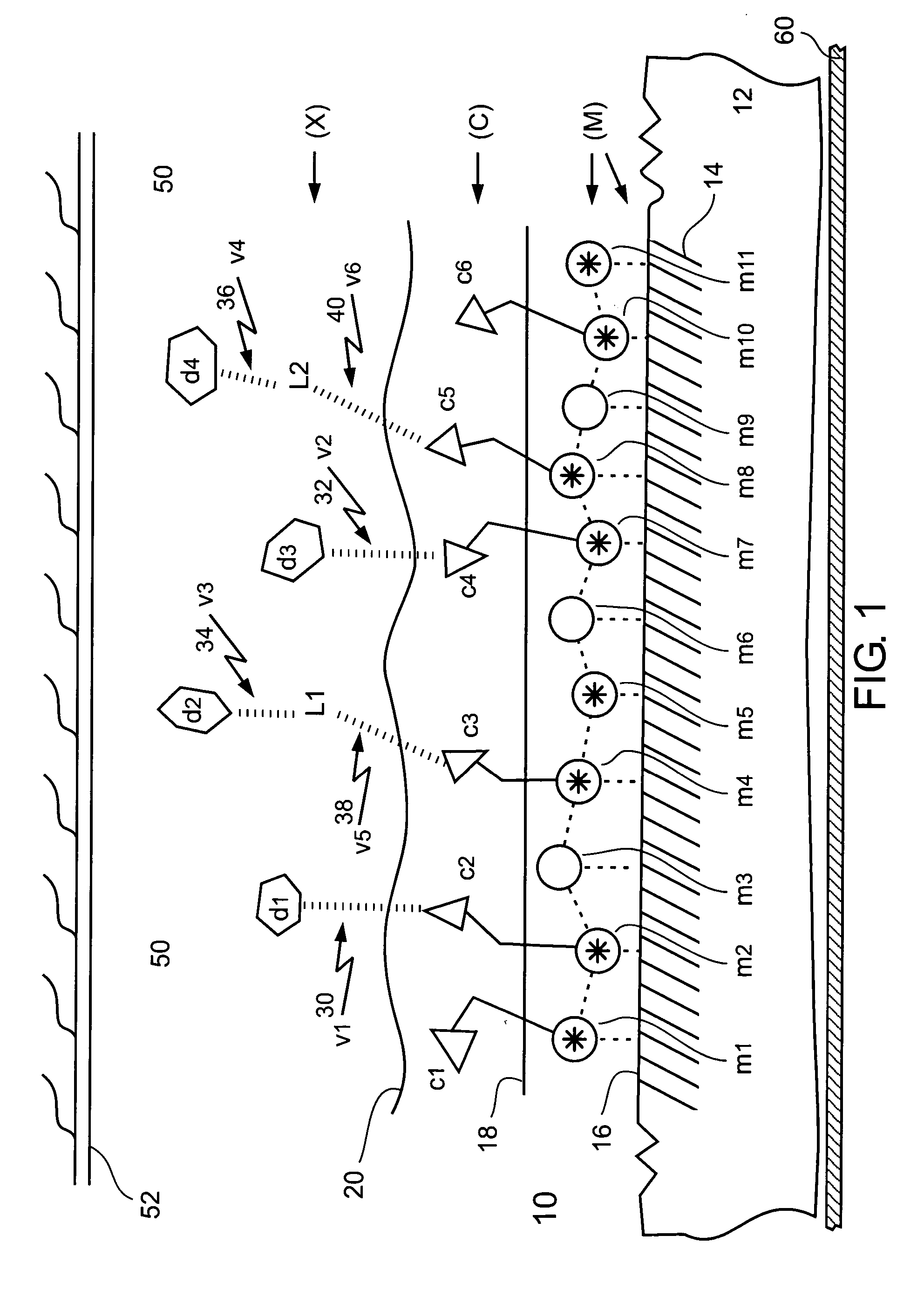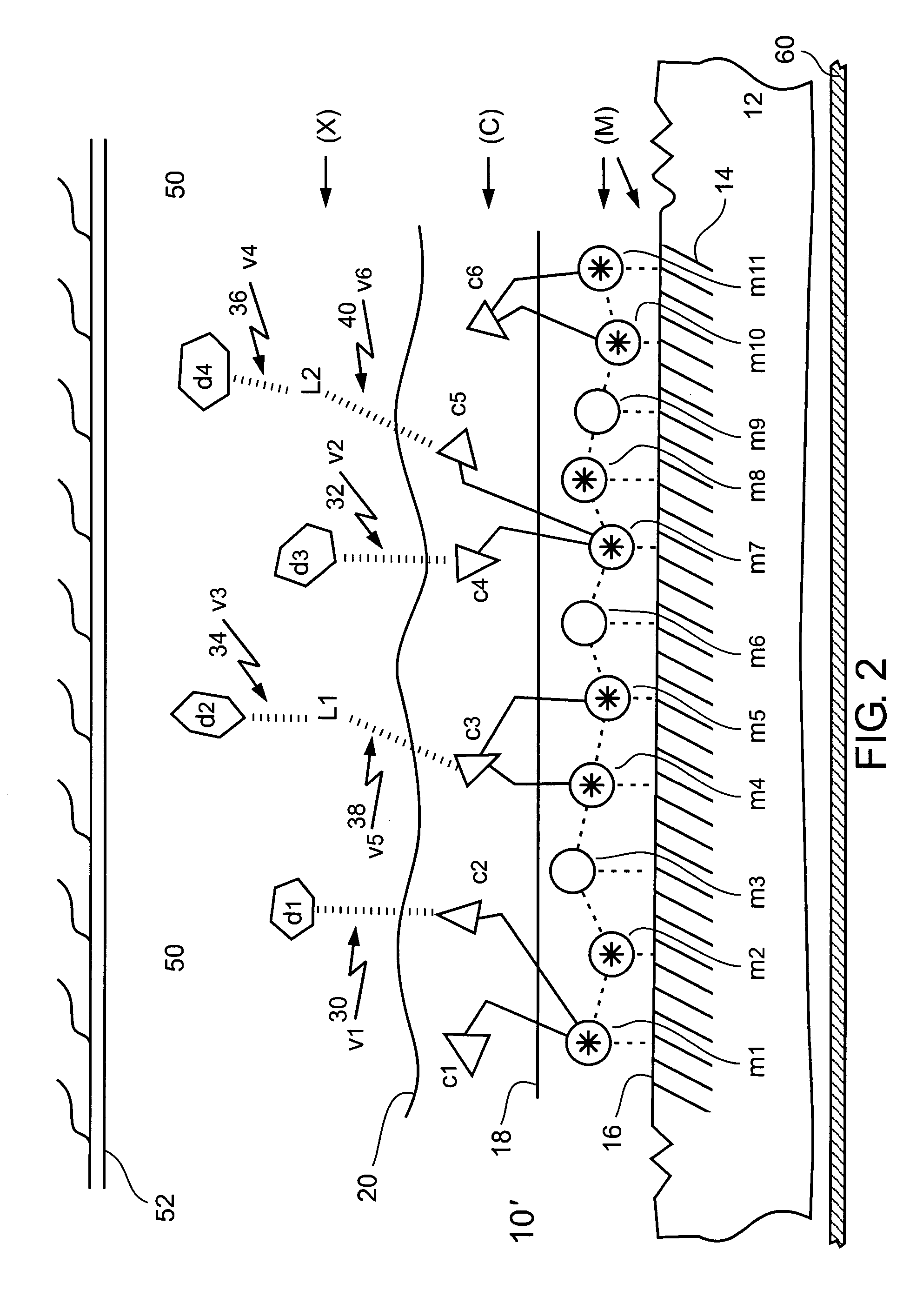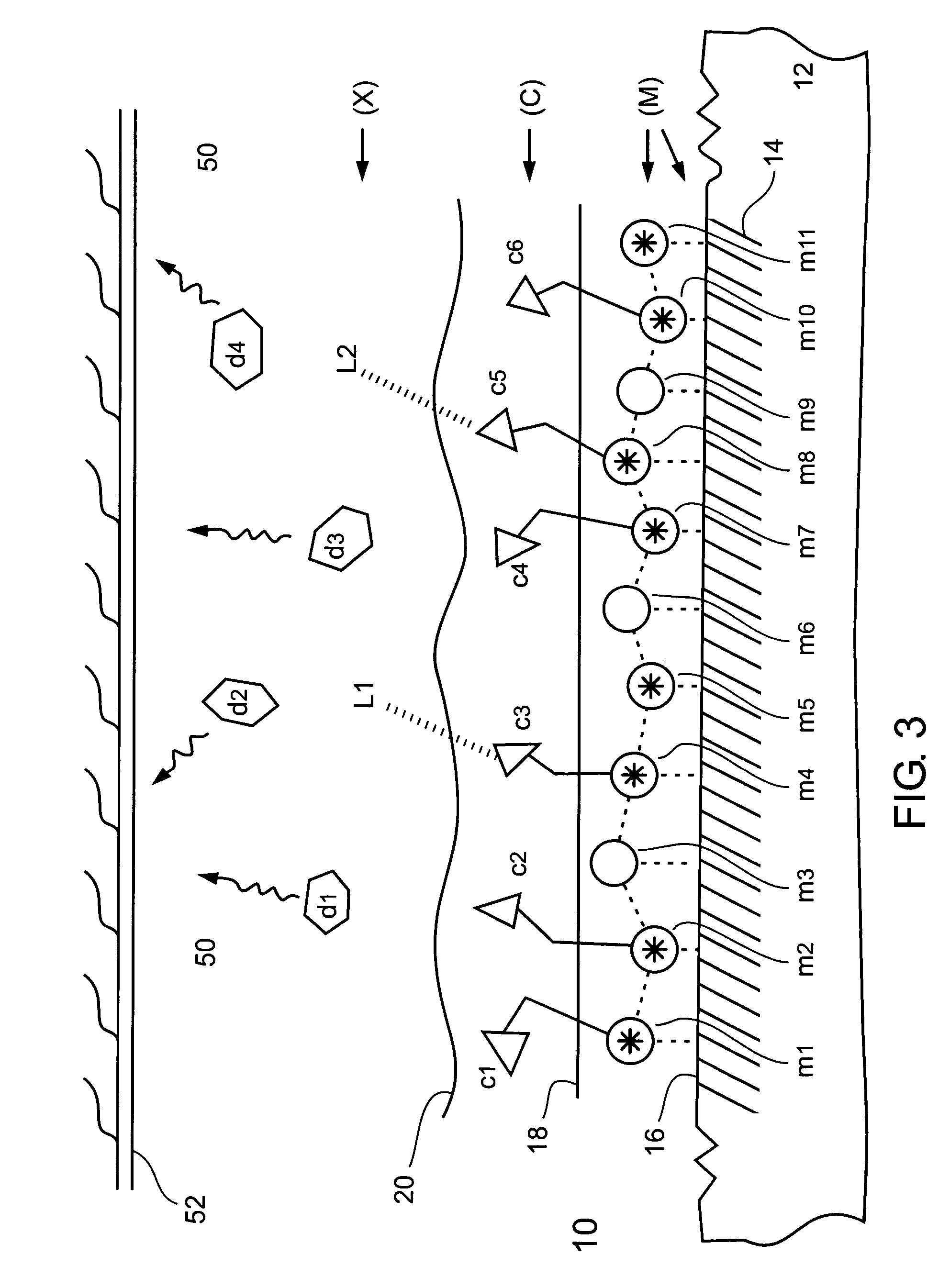Chelating and binding chemicals to a medical implant, medical device formed, and therapeutic applications
a technology of chelating and binding chemicals and medical implants, applied in the field of medical devices, can solve the problems of rationalization of an enormous number of clinical trials, inability to prevent or inhibit thrombosis in all cases, and inability to guarantee the effect of thrombosis prevention or inhibition
- Summary
- Abstract
- Description
- Claims
- Application Information
AI Technical Summary
Benefits of technology
Problems solved by technology
Method used
Image
Examples
example 1
Removing Metal Surface Blocking from a Metal Surface (M)
[0367] Metal surface blocking, in the form of phosphoric acid and sulfuric acid ions, was removed from the metal surface of an electropolished metal stent made of 316L stainless steel wiring 0.2 mm thick.
[0368] An electropolished metal stent made of 316L stainless steel wiring 0.2 mm thick, was subjected to surface examination using an SEM (scanning electron microscope) and elemental analysis of selected elements using a spectrometer. The stent was found to have a smooth surface with some wrinkled and pitted areas. Elemental analysis of selected elements of the stent was as follows: Cr (17.8%), Ni (14.6%), Mo (2.8%), Mn (2.4%), and Si (0.2%), which conformed well to the same elemental analysis of a standard 316L stainless steel foil 0.2 mm thick.
[0369] The stent was exposed to a dilute aqueous solution of ammonium hydroxide (NH4OH) having a concentration in a range of between about 5% and about 30% (vol / vol), at room tempera...
example 2
Activating (Via Ionizing and Charging) a Metal Surface (M)
[0370] The metal surface of a stainless steel stent, absent of metal surface blocking, was activated by using a chemical oxidation type of a metal surface activation procedure.
[0371] An oxidizing reagent, 36 mg of ammonium persulfate ((NH4)2S2O8), was dissolved in 2 ml of a 10% solution of NaOH in water. The stainless steel stent (whose metal surface blocking was removed as described in Example 1) was exposed to this solution at a temperature between about 70° C. and about 100° C., for about 20 minutes. A visually noticeable different color (yellowish) appeared on the metal surface of the stent. The change in color indicated creation of activated charged metal ions, such as: [Fe+2O−], [Cr+3O−], [Ni+2O−], and [Cu+2O−], on the metal surface of the stent. This charging enabled the metal surface of the stent to be chelated to, and bind, chelator molecules of a chelator, via activated (ionized and charged, oxidized) metal ions h...
example 3
Chemical Binding (Via Chelation) a Chelator (C) to an Activated Metal Surface (M)
[0372] In a chemical type of chelator binding procedure, a chelator was chemically bound (via chelation) to an activated (ionized and charged, oxidized) stainless steel stent, for forming a stainless steel stent having a metal surface chelated to the chelator in a metal surface—chelator chelate type of coordination compound configuration.
[0373] The activated (ionized and charged, oxidized) stainless steel stent (from Example 2) was exposed to an aqueous solution of edetic acid (EDTA) chelator having a molar concentration of 0.1 M, and including 0.1 M of oxalic acid, at room temperature (20-25° C.), for a time period of between about 30 minutes and about 180 minutes. Following the chemical binding procedure, the edetic acid (EDTA) chelator bound stainless steel stent was fully washed with water and then dried.
PUM
| Property | Measurement | Unit |
|---|---|---|
| concentration | aaaaa | aaaaa |
| concentration | aaaaa | aaaaa |
| temperature | aaaaa | aaaaa |
Abstract
Description
Claims
Application Information
 Login to View More
Login to View More - R&D
- Intellectual Property
- Life Sciences
- Materials
- Tech Scout
- Unparalleled Data Quality
- Higher Quality Content
- 60% Fewer Hallucinations
Browse by: Latest US Patents, China's latest patents, Technical Efficacy Thesaurus, Application Domain, Technology Topic, Popular Technical Reports.
© 2025 PatSnap. All rights reserved.Legal|Privacy policy|Modern Slavery Act Transparency Statement|Sitemap|About US| Contact US: help@patsnap.com



